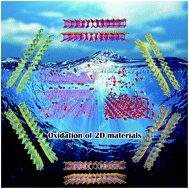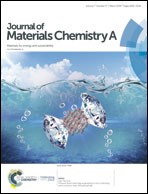Recent advances in oxidation and degradation mechanisms of ultrathin 2D materials under ambient conditions and their passivation strategies
Abstract
Graphene-like two-dimensional (2D) nanomaterials, such as transition metal dichalcogenides (TMDCs) and black phosphorus (BP), have been extensively studied in the recent years due to their numerous and unusual physical and chemical properties that are introduced when charge and heat transports are confined to a plane. However, many 2D materials with atomic-scale thicknesses suffer from oxidation and degradation effects under ambient conditions, which is one of the biggest obstacles in their practical applications. Studies involving oxidation and degradation mechanisms are ongoing, and various protection strategies have been proposed and tested with promising progresses. In this review, we focus on the insights involving oxidation and degradation mechanisms of 2D materials, particularly BP and TMDCs under ambient conditions, by means of theoretical results and experimental observations, as well as summarizing state-of-the-art protection strategies and corresponding passivation mechanisms.

- This article is part of the themed collection: Recent Review Articles


 Please wait while we load your content...
Please wait while we load your content...